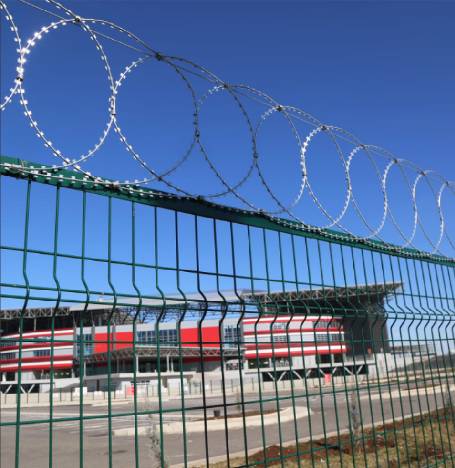Understanding Iron Wire Sizes for Various Applications and Their Impact on Performance and Strength
Understanding Iron Wire Size A Comprehensive Guide
Iron wire is a versatile and indispensable material used in a variety of applications, from construction and manufacturing to arts and crafts. The size of iron wire is an essential specification that influences its strength, flexibility, and suitability for specific tasks. In this article, we will delve into the factors that determine iron wire size, the common standards used, and practical considerations for choosing the right wire for your needs.
Significance of Wire Size
Wire size is typically measured by its diameter, which can significantly impact its mechanical properties. In general, the larger the diameter of the wire, the greater its tensile strength—meaning it can withstand more tension without breaking. However, thicker wires are also less flexible. Conversely, thinner wires are more pliable and suitable for delicate applications, but they may not support heavy loads. Therefore, choosing the right size of iron wire is crucial for ensuring safety and effectiveness in its application.
Standards of Measurement
Iron wire sizes can vary based on different standards. The two most common measurement systems used worldwide are the Imperial (AWG - American Wire Gauge) and metric systems.
1. American Wire Gauge (AWG) This system is widely used in the United States and assigns a number to different wire sizes; the higher the AWG number, the smaller the diameter. For instance, a 10 AWG wire has a larger diameter than a 20 AWG wire. AWG is primarily used in electrical applications, but it also finds relevance in crafting and other industries.
2. Metric System In many parts of the world, wire sizes are measured in millimeters. A typical metric size might be referred to as 1.0 mm, 2.0 mm, etc. This system provides a straightforward measurement that can be easier to understand for those accustomed to metric measurements.
iron wire size

Choosing the Right Iron Wire Size
When selecting iron wire for a specific application, consider the following factors
- Application Requirements Determine the purpose for which the wire will be used. For instance, a simple garden trellis may require thinner wire, while constructing a fence or a support structure requires a more robust, thicker wire.
- Load-Bearing Capacity If the wire will bear weight or tension, conduct calculations based on the expected load. Utilize tensile strength charts available for the specific type of iron wire being considered.
- Environmental Factors Consider the conditions in which the wire will be used. Exposure to moisture, chemicals, or extreme temperatures may necessitate a particular type of iron wire, such as galvanized or stainless steel, to prevent corrosion.
- Flexibility vs. Rigidity Depending on whether you need the wire to bend easily or remain rigid, choose a size accordingly. For example, while crafting sculptures or intricate designs, thinner wires offer greater flexibility.
Conclusion
In summary, understanding iron wire size is essential for selecting the right material for any project. Whether you are constructing a building, crafting a piece of art, or performing electrical work, knowing how to measure, interpret, and choose the appropriate wire size can greatly influence the success of your endeavor. As you prepare for your next project, take the time to consider these factors, and ensure you select the iron wire that is best suited for your specific needs. Ultimately, the right choice will lead not only to better results but also to enhanced safety and durability.
-
Space-Saving Chain Fence Hacks Vertical Gardening with Cyclone MeshNewsJul.16,2025
-
Innovations in Iron Nail Wire Production for Modern ConstructionNewsJul.16,2025
-
Creative Uses of Wire Netting Fence in Modern Landscape DesignNewsJul.16,2025
-
Barbed Wire Fence Innovations in Anti-Climb TechnologyNewsJul.16,2025
-
Architectural Uses of Umbrella Nails for Aesthetic Roof DesignsNewsJul.16,2025
-
Architectural Uses of Razor Barbed Wire in Secure Urban DesignNewsJul.16,2025




